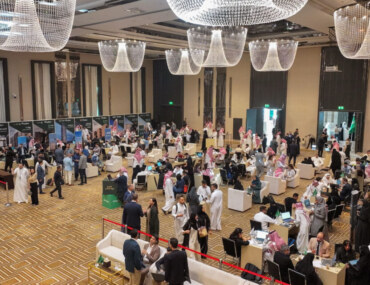In real estate investment, success is not based on guesswork but on numbers and smart analysis. One of the most important tools used by investors is the Capitalization Rate in Saudi Arabia, a quick financial metric that helps evaluate an investment property’s return without complex calculations.
In this guide, we explain what the capitalization rate is, how to calculate it step by step, and how to use it to compare investment opportunities in the Saudi market. Practical examples are included to make everything easy to understand.
What Is the Capitalization Rate?
The capitalization rate (often called Cap Rate) is a percentage that measures the expected annual return from an investment property based on its Net Operating Income (NOI) compared to its purchase price or market value. It does not include financing or loan costs, which makes it a clear and simple measure for property performance, especially in commercial real estate.

What Is Income Capitalization for Commercial Property?
Income capitalization is a valuation method used to determine the market value of income-generating properties such as office buildings, retail centers, and warehouses. This method converts the annual net income of a property into an estimated value using the capitalization rate.
Formula:
Property Value = Net Operating Income (NOI) ÷ Capitalization Rate
This method is widely used by real estate appraisers and investors to estimate whether a property is priced fairly based on its rental income rather than market speculation.
The Musharaka REIT Portfolio Valuation Report offers an example of how capitalization rates are applied in Saudi Arabia’s real estate market, including specific cap rate benchmarks for office and retail sectors.
Calculating the Capitalization Rate in Real Estate Analysis in Saudi Arabia
Investors use the Capitalization Rate in Saudi Arabia to quickly assess the profitability of real estate opportunities. This metric is especially useful in cities such as Riyadh, Jeddah, and Dammam where prices and rental returns vary by area.
You may also benefit from reading our article on Buying Property Under the Tax Regulation in Saudi Arabia.
Capitalization Rate Formula
Cap Rate = (Net Operating Income ÷ Property Value) × 100
For example: You are considering buying a commercial building in Dammam valued at 2,000,000 SAR. It generates 180,000 SAR in annual net operating income after deducting all operating expenses.
Cap Rate = 180,000 ÷ 2,000,000 × 100 = 9%
This means the expected annual return is 9% based on the property’s income, which is considered a strong rate for a commercial property.
Importance of the Capitalization Rate
The Capitalization Rate in Saudi Arabia helps investors:
- Compare investment properties quickly
- Identify whether a property price reflects its true income potential
- Evaluate investment risk
- Support real estate valuation using the income approach
- Make data-driven decisions without complex analysis
Read also: Everything You Need to Know About Real Estate Contribution Platform in Saudi Arabia.
When Is the Cap Rate High or Low?
Cap Rate Level | What It Means |
|---|---|
Cap Rate Level High Cap Rate (8–12%) | What It Means Higher return but higher risk, usually in developing areas |
Cap Rate Level Medium Cap Rate (6–8%) | What It Means Balanced return and risk |
Cap Rate Level Low Cap Rate (4–6%) | What It Means Lower return but higher stability and strong location |
In major cities like Riyadh and Jeddah, cap rates are usually 5–7%, while emerging cities or developing projects may offer 8–10% to attract investors.
Comparing Capitalization Rate with Other Metrics
Although useful, the capitalization rate should not be used alone. It must be combined with other real estate metrics such as:
Metric | What It Measures |
|---|---|
Metric Cash-on-Cash Return | What It Measures Actual return on invested cash after financing |
Metric Net Operating Income (NOI) | What It Measures Real income after expenses |
Metric Internal Rate of Return (IRR) | What It Measures Long-term profitability over several years |
Limitations of the Capitalization Rate
The Capitalization Rate in Saudi Arabia has limitations:
- It ignores financing or loan costs
- It does not account for future increases in income or expenses
- It does not reflect resale value
- It may not work well for properties without stable rental income
For this reason, it should be combined with other investment metrics for a comprehensive property evaluation.

Conclusion
The Capitalization Rate in Saudi Arabia is a fast and practical way to estimate investment returns and compare real estate opportunities. It is ideal for the first stage of property evaluation—but it should not be the only decision-making tool. Using it alongside other financial metrics ensures smarter investment decisions, especially with Saudi Vision 2030 coming to fruition.
For more insights on the Saudi real estate market, career opportunities, and industry updates, visit My Bayut Saudi Blog and follow us on social media for the latest trends.





